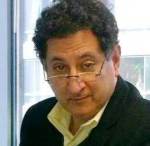Updated
Business Brief: Popularity of Argan Oil Spurs International Competition; High-speed Train on Schedule; and Economic Indicators Improving – Jean R. AbiNader
Jean R. AbiNader, MATIC
September 5, 2017
Growing demand for argan oil has spawned competitors to Morocco’s industry; latest report shows progress of high-speed train construction is on track, while the latest economic news is largely favorable for Morocco’s economic growth.
Argan market continues expansion as international competition increases. According to Grand View Research, as reported in the Digital Journal, the argan oil market exceeded 1300 million tons in 2016. Demand is increasing rapidly, with expectations of a market size of more than $1 billion by 2025.
The increased demand is due to many factors, including the growing importance of argan in medical applications, such as the treatment of certain cancers and arthritis. Given that increased population in Morocco is increasing local demand, Israel, Mexico, and Algeria have started their own production to compete for global market share.
As the press release from Grand View Research point out, “Argan oil is a developing industry in the US which is gaining importance on account of its high-performance ingredients. Growing disposable income, demand for branded luxury cosmetics, and preference for organic ingredients is anticipated to augment growth. The widening of distribution channels has made these products readily available to the consumer. Ongoing R&D investments and technological advancements in the area of processing ingredients have been the key factors responsible for driving industry growth over the past few years.”
Currently, there is a limited supply of argan oil, which has resulted in a price war among producers. “Argan oil draws its greatest demand from cosmetics, food, and medical industries. The cosmetics segment accounted for the largest market share in 2015. Argan oil is also gaining acceptance in the food industry, where it is used for seasoning salad and as cooking oil in high-end restaurants in the US.” According to the report, cosmetics accounted for almost 41% of the market volume in 2016, and the highest growth rate in the next eight years will come in the medical segment where “Argan extracts help accelerate wound healing process, lower cholesterol levels, improve digestion, protect the liver, manage diabetes, reduce inflammation, and boost heart health.”
High-speed rail from Tangier to Casablanca to have first tests in September. On time, at 92% completion, the high-speed rail system promises to be a first in Africa and the Middle East, according to the Abdelkader Amara, the Minister of Equipment, Transport, and Logistics, who recently visited the future station in Tangier as well as the nearby maintenance workshop and viaduct construction, according to a Morocco World News story.
The General Director of the railways authority, Rabie Khlie, said that the upcoming tests will involve trains traveling in excess of 200 mph on an 80 mile stretch of track. Concurrently, training for conductors, maintenance personnel, and commercial staff is also on schedule. If steps are completed in time, the system will be fully tested in the first half of 2018 with a commercial start-up later that summer.
Minister Amara noted that “the El Hachef viaduct, with an investment of MAD 1.092 billion ($110 million), constitutes the longest viaduct of the line with 3.5 kilometers, and one of the most spectacular works of the project,” adding that it presents “impressive technical characteristics and illustrates the magnitude of the component of this large-scale project, noting that it has 12 viaducts, 169 road bridges and railway bridges, and more than 100 hydraulic structures, 80% built by Moroccan companies.”
Government statistics show economic growth. The Directorate of Economic Studies and Financial Forecasting (DEPF) released additional statistics regarding Morocco’s growth in the first half of 2017. As noted previously, the dramatic rebound of cereal production by some 203% during this year’s growing season, contributed to a sharp increase in economic growth.
As quoted in Morocco World News, “By component of cereal production, barley recorded the largest increase compared to the previous season, with a 366.2% increase year-on-year, followed by durum wheat by 166.2% and soft wheat by 166.1%, according to the DEPF.” With more agricultural supplies, it is not surprise that agricultural exports increased through July 2017 along with food and construction products.
On the industrial side, “The production of phosphate derivatives, an important component of the chemical industry, grew by 35.8% at the end of May 2017, compared to a 7.7% increase in 2016,” noted the DEPF. In the construction and building sector, a strong recovery in cement sales was measured in July by some 42.2% after a sharp decline in June by some 30.6%. “This improvement is attributable to the resumption of the activity of self-construction, as well as of the public works market,” says the DEPF.
In terms of the services sectors, there was an increase in overall tourism through June of 9.2% with overnight stays up by 17.7%. Air traffic was up by 11.5% and port traffic increased by 10.1% in the same period. Although mobile telephone activity was up only slightly, by 1.5%, Internet penetration grew by 29.3%.
